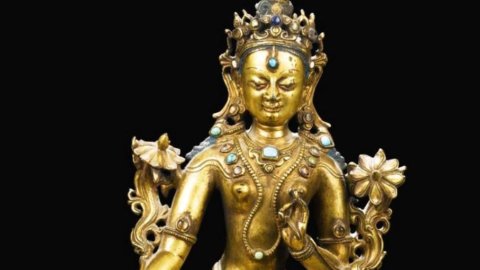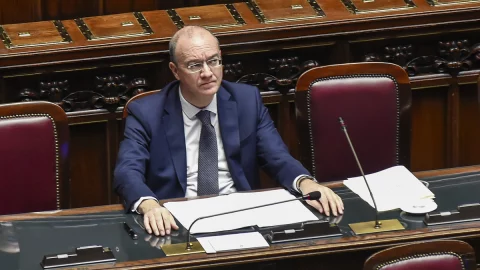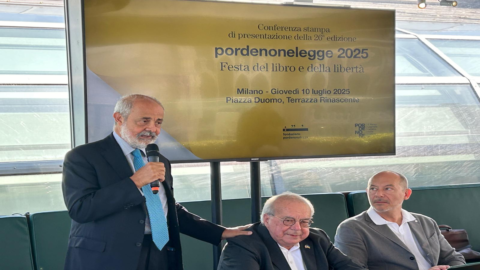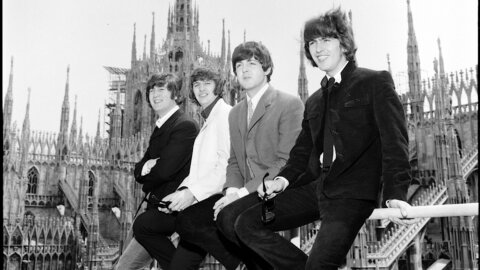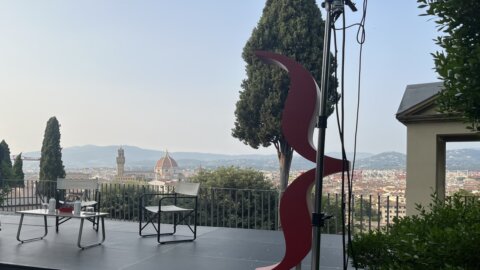At Christie’s headquarters, 8 King Street, touring international highlights of important Asian Art from the upcoming auctions in Hong Kong (26 November), Paris (10 December), and New York (27 January) and also a stellar private sale highlight will be previewed from 31 October to 4 November. These highlights include a very important Imperial embroidered silk thangka which is a masterpiece that opens up a new understanding of Imperial patronage in Buddhism during the early Ming dynasty. It is the only example of its kind in private hands. For more details on the touring highlights please see page 4 and click here to watch a video on the thangka which will be on view ahead of being sold in the Hong Kong auction.
Christie’s two-day sale of Chinese Ceramics, Works of Art and Textiles will take place at Christie’s South Kensington on 4 and 7 November. Comprising 581 lots overall (316 lots on day one and 265 on day two), this well balanced and carefully curated sale presents buyers with a wealth of private material across a wide variety of media including mark and period imperial porcelain, Republic porcelain, textiles, jade carvings, Buddhist art, scholars objects, snuff bottles, cloisonné enamels, paintings and furniture, all at multiple price points and with estimates ranging from just £1,000 up to £30,000.
This sale is specifically tailored to meet current market demands, such as the notable appetite for Tibetan thangkas, which have been realising very strong prices in recent seasons and are particularly sought after at present by discerning Asian collectors. Christie’s is pleased to present a 14-lot private collection, the Property of a Gentleman (lots 485-498), which is led by a thangkaprobably depicting the Rolpai Dorje (1717-1786), Qianlong Period (1736-1795) (estimate: £12,000-18,000, illustrated right). Formerly in an American collection, it was gifted to the current owner prior to 1999. This rare painting depicts a high placed pontiff of the Tibetan Yellow Cap or dGe.lugs.pa order. The individual facial portrait style is executed in a realistic western manner and can be compared to the very small group of known painted representations of Rolpai Dorje (Rol.pa’i.rdo.rje) (1717 – 1786), the ‘Teacher of The Empire’ under Emperor Qianlong (1736 – 1796). Most examples show the lama with an elderly face. Just one painting of the group illustrates a younger depiction as in the present lot; it is in the Ethnographic Museum of Berlin and, unlike this thangka, it is inscribed with his name.
A number of private collections of jade carvings from the United Kingdom, Europe and Asia, include the cover lot: a contemplative jade carving of an ascetic monk on a cloisonné enamel base, 17th-18th century (estimate: £10,000-15,000, illustrated left). The most valuable jade lot of the sale is a striking chicken bone jade archaistic vase, late 17th century (estimate: £20,000-30,000,illustrated right), which is offered from a private English collection having been purchased in 1951 from the renowned London dealer Louis Joseph.
There is a focus on Ming dynasty art in London this November, highlighted by the Ming dynasty exhibition at the British Museum. A star of this sale is a striking Ming dynasty blue and white ewer, Jiajing mark and period (1522-1566) with European gilt metal mounts (estimate: £15,000-20,000, illustrated left). It is an example where the East and West meet aesthetically, with mounts enhancing the bold form. The blue is of a particularly bright and vivid cobalt tone, found only on the very best quality porcelain from this period.
Other standout highlights of mark and period porcelain include a blue and white ‘chilong’lantern vase, Daoguang mark and period (1821-50) which exhibits finely painted decoration and beautiful form (estimate: £8,000-12,000, illustrated right); a famille rose gu vase, Jiaqing mark and period (1796-1820) also presents excellent painting and vibrant colours (estimate: £8,000 – 12,000, illustrated far right). Depicting the Eight Buddhist Emblems, the form, which takes its inspiration from archaic bronzes, is very Chinese-taste in its appeal. It comes to the market from the Property of an English Lady.
Earlier ceramics include a charming collection of celadon chargers including a large Longquan celadon dragon dish, Ming dynasty (estimate: £2,000-3,000, illustrated right). Later examples build on recent successful offerings of Republic (1912-1949) porcelain, with a 16-lot section that includes an exquisitely painted famille rose vase, depicting the poet Tao Yuanming, dressed in rags, with the signature of Wang Qi (estimate: £4,000-6,000, illustrated left). Dated to the year corresponding to 1930, it was acquired in the United States in the mid 2000s.
18th century Buddhist gilt bronzes are led by a delicately cast early 18th century gilt bronze figure of Syamatra (estimate: £15,000-20,000, illustrated left). Acquired prior to 1985, it is one of a three-lot collection offered by a European Lady (lots 511-513). Among the religious paintings is a striking group of five works depicting Daoist Immortals and Heavenly Marshals (lots 600-604) from a collection of another European Lady, which were acquired in Munich in the 1960s. The estimate for each painting is £6,000 to £8,000. One of the most beautiful examples depicts the 17th century Daoist immortal Yuanshi Tianzun, also known as Yu Qing, The Jade Pure One (illustrated right). He is depicted wearing long robes, delicately painted with dragon roundels and highlighted in gilt; he is seated on an elaborate throne with cloud scrolls in the background. Elsewhere in the 20-lot painting section, highlights include a Drunken Scholar, by Huang Yongyu (b.1924), which is executed in ink and colour on paper (estimate: £10,000- 20,000,illustrated right). It was gifted, in 1982, to the current owner by the artist, an established Chinese painting master, who is particularly sought after by collectors in Asia.
There has been a recent focus on Ming dynasty bronze scholar’s objects. This auction presents a 22-lot private collection from the United Kingdom, assembled predominantly in the 1980s and 1990s, with estimates from £1,000 to £3,000 (lots 569-591).
There is currently a robust market for the best quality textiles and robes, which has grown over the last couple of years. This sale includes several private collections from Europe and the United Kingdom. Key examples include a 6-lot collection of robes predominantly acquired from a private German Collection and amassed in the early 20th century, (lots 537-542), as well as a 7-lot European collection (lots 268-274) which was acquired over a similar time period from 1900. It is led by an Imperial embroidered yellow silk twelve-symbol ‘dragon’ robe for a child, dating from the mid-19th century (estimate: £10,000-15,000, illustrated left).
Touring international highlights of important Asian Art from the upcoming auctions in Hong Kong (26 November), Paris (10 December), and New York (27 January) and also a stellar private sale highlight will be previewed from 31 October to 4 November.

